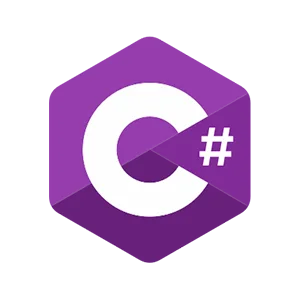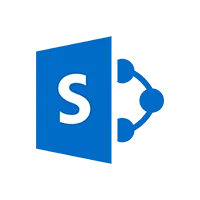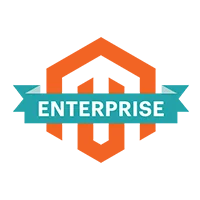With so much evolution in technology, cloud services have now become a trend. All businesses are leveraging the power of the cloud to store backups and recover massive amount of data. As we step into 2023, cloud computing continues to redefine the way businesses operate and grow. According to recent reports, the global cloud computing market is expected to reach a staggering $623.3 billion by the end of 2023, growing at an impressive CAGR of 18.6%. Its rapid growth can be attributed to the many advantages it provides, such as cost effectiveness, scalability, and accessibility. But it is the new trends in this field that really set the stage for the future.
This article will take you through the top 10 trends of cloud computing that will benefit the business in future. But before we delve into these trends, let’s start with the basics.
Introduction to cloud computing

For those who are listening to this term for the first time, let me introduce you to cloud computing, in short. Cloud computing is a revolutionary technology that enables individuals and businesses to access and manage resources, such as servers, storage, databases, networking, software, and analytics, over the internet. Instead of owning and maintaining physical data centers or servers, users can leverage the power of cloud services provided by third-party providers. These services are hosted in data centers all over the world, which makes them easy to access and scale.
Types of Cloud Computing Services:
Cloud computing services are categorized into three primary models, referred to as the “Cloud Service Models.” These models describe the degree to which customers have control, responsibility, and flexibility over their computing resources. Let’s understand all three Cloud Service Models in brief:
Infrastructure as a Service (IaaS):
The cloud provider delivers basic computing infrastructure over the internet in an IaaS model. Customers can rent and manage virtualized hardware resources, such as virtual machines (VMs), storage, and networking, on a pay-as-you-go basis. With IaaS, customers have more control over the underlying infrastructure, including the operating systems, applications, and data they run on the virtual machines. Popular IaaS providers include Amazon Web Services (AWS), Microsoft Azure Cloud Development, Google Cloud Platform development (GCP), and IBM Cloud.
Key features of IaaS:
- Scalability: Customers can easily scale up or down based on their resource needs.
- Flexibility: Users can customize and configure the virtual machines and networking to suit their specific requirements.
- Reduced Capital Costs: IaaS eliminates the need for purchasing and maintaining physical hardware.
Platform as a Service (PaaS)

The second most popular among all Cloud Service Models is the PaaS model. PaaS in cloud computing provides a platform and environment for developers to build, deploy, and manage applications without the complexity of managing the underlying infrastructure. This model abstracts much of the infrastructure management, allowing developers to focus on coding and application functionality. Common components of PaaS offerings are development tools, application frameworks, and database services. Prominent PaaS providers include Heroku, Google App Engine, Microsoft Azure App Service, and Red Hat OpenShift.
Key features of PaaS:
- Developer-Friendly: PaaS simplifies application development and deployment, promoting collaboration among development teams.
- Rapid Development: Developers can create applications faster due to pre-built components and automated processes.
- Reduced Operational Overhead: PaaS providers handle much of the infrastructure management, including security, scaling, and maintenance.
Software as a Service (SaaS)
SaaS delivers fully functional software applications over the internet on a subscription basis. Users can access these applications through a web browser, eliminating the need for installation and maintenance. SaaS covers a wide range of software categories, including office productivity tools, customer relationship management (CRM) software, email services, and more. Notable SaaS providers include Microsoft 365, Google Workspace, Salesforce, and Dropbox.
Key features of SaaS:
- Accessibility: Users can access SaaS applications from anywhere with an internet connection.
- Automatic Updates: SaaS providers handle software updates and maintenance, ensuring users always have access to the latest features and security patches.
- Cost-Efficiency: SaaS eliminates the need for purchasing, installing, and maintaining software on individual devices.
All these cloud service models offer businesses flexibility, scalability, and cost-efficiency, enabling them to choose the most suitable approach for their specific needs. Whether it’s IaaS for infrastructure flexibility, PaaS for streamlined development, SaaS for access to ready-made software, XaaS for specialized services, or FaaS for event-driven applications, cloud computing has transformed the way organizations manage their IT resources and innovate in the digital era.
Benefits of Cloud Computing for Businesses:

Cloud computing offers a wide array of advantages for businesses, regardless of their size or industry. These advantages can significantly impact operations, cost-efficiency, and overall business agility. Here are some of the key advantages of cloud computing for businesses:
Cost-Efficiency: Cloud services eliminate the need for large upfront hardware and software investments. Companies only have to pay for resources on an as-needed basis, lowering overall costs.
Scalability: Cloud computing solutions are highly scalable, which enables businesses to easily adjust the amount of computing resources they use to meet varying customer requirements.
Accessibility: Cloud services can be accessed from any location as long as there is an internet connection, which encourages working remotely and collaborating with people all over the world.
Security and Compliance: Compliance and Security Cloud service providers make significant investments in compliance and security measures, which frequently surpass what can be accomplished by individual businesses. Compliance with rules and standards in the industry is also made easier.
Top 10 Cloud Computing Trends for future
Cloud computing continues to evolve and shape the future of Cloud technology. Here are the top 10 cloud computing trends that are likely to continue shaping the industry in the future:
- Hybrid and Multi-Cloud Adoption: Businesses are increasingly recognizing the value of combining different cloud providers and deployment models to optimize performance, mitigate risks, and avoid vendor lock-in.
- Edge Computing: Edge computing is gaining momentum as businesses seek to reduce latency and improve real-time processing for applications like IoT, autonomous vehicles, and augmented reality. Cloud providers are expanding their services to the edge to support these use cases.
- Serverless Computing: Serverless computing, which abstracts server management, will continue to gain popularity as it simplifies development and improves cost-efficiency.
- AI and ML Integration: Cloud providers are enhancing their AI and ML services, democratizing access to advanced analytics, natural language processing, and computer vision capabilities.
- Quantum Computing: While still in its infancy, quantum computing promises to revolutionize cloud computing by solving complex problems at speeds unimaginable with classical computers.
- Containerization and Kubernetes: Containers and orchestration tools like Kubernetes will remain vital for deploying and managing applications efficiently in the cloud.
- Serverless Containers on the Horizon: Combining the benefits of serverless and containerization, serverless container platforms are emerging to simplify the deployment of containerized workloads.
- Enhanced Security and Compliance: As cloud adoption continues to surge, security automation, zero-trust architectures, and improved compliance management tools will be essential for safeguarding data and operations.
- Green Computing: Sustainability concerns will drive cloud providers to invest in renewable energy sources and energy-efficient data centers, aligning cloud infrastructure with environmental responsibility.
- Blockchain: Blockchain technology will play a crucial role in enhancing the security, transparency, and trustworthiness of cloud services, particularly in areas like data storage and identity management.
Final thoughts:
As we venture further into the digital age, cloud computing remains at the forefront of technological transformation. These trends in cloud computing for 2023 not only reflect the industry’s evolution but also pave the way for businesses to innovate, optimize, and thrive in an increasingly interconnected and data-driven world. Stay tuned, as the cloud’s potential is far from being fully realized, and the future promises even more exciting developments on the horizon.
The post Top 10 Cloud Computing Trends for future appeared first on .
Tags:
- Cloud Computing
- Software Development Company
- aws cloud computing
- benefits of cloud computing
- cloud based
- cloud computing
- cloud computing services
- cloud providers
- cloud solutions
- cloud technology
- iaas cloud computing
- introduction to cloud computing
- PaaS in cloud computing
- saas in cloud computing
- types of cloud computing
- what are the security risks of cloud computing
- what is cloud computing
- what is cloud computing in simple terms
- what is iaas
- what is paas

 .NET MAUI Development
.NET MAUI Development
 Xamarin Application Development
Xamarin Application Development
 React Native App Development
React Native App Development
 iOS Application Development
iOS Application Development
 Android Application Development
Android Application Development
 Android Wear App Development
Android Wear App Development
 Ionic Development
Ionic Development
 iBeacon Application Development
iBeacon Application Development
 Universal Windows Platform (UWP)
Universal Windows Platform (UWP)
 Kotlin Application Development
Kotlin Application Development
 Swift Application Development
Swift Application Development
 Flutter Application Development
Flutter Application Development
 PWA Application Development
PWA Application Development
 Offshore Software Development
Offshore Software Development
 Custom Application Development
Custom Application Development
 Front-End Development
Front-End Development
 Full Stack Development
Full Stack Development
 AI & Machine Learning
AI & Machine Learning
 Custom CRM Solutions
Custom CRM Solutions
 Flask Software Development
Flask Software Development
 Electron JS Development
Electron JS Development
 ChatGPT Development
ChatGPT Development
Telemedicine App Development
Build Smart Telemedicine Platform
Beauty & Salon App Solutions
Hire Workato Experts
Workato Consulting & Support
 RaspBerry Pi
RaspBerry Pi
 Firmware Software Development
Firmware Software Development
 ESP 32 Software Development
ESP 32 Software Development
 Embedded Development
Embedded Development
 Internet of Things
Internet of Things
 Nordic Development
Nordic Development
6G Solutions
Smart Hospitality Solutions
Smart IoT Development
Custom IOT Enabled Smart Lock
Nuki Smart Lock
Salto Smart Lock
Smart Lock SDK Integration
TTlock Smart Lock
Dairy IoT Solutions
Smart IoT System Development for HVAC
 .NET Application Development
.NET Application Development
 .NET Nuke Development
.NET Nuke Development
 Microsoft Dynamics CRM
Microsoft Dynamics CRM
 Microsoft Small Business Solution
Microsoft Small Business Solution
 VB .NET Development
VB .NET Development
 C# Development
C# Development
 Sharepoint Migration
Sharepoint Migration
 Sharepoint Development
Sharepoint Development
 ASP.NET Core Development
ASP.NET Core Development
 ASP.NET Development
ASP.NET Development
 ASP.NET MVC Development
ASP.NET MVC Development
 Kentico CMS
Kentico CMS
 Umbraco CMS
Umbraco CMS
 AJAX Development
AJAX Development
 Agile Development
Agile Development
 Microsoft Bot
Microsoft Bot
 Microsoft Blazor
Microsoft Blazor
 Microsoft Azure Cognitive
Microsoft Azure Cognitive

 Mean Stack Development
Mean Stack Development
 Vue JS Development
Vue JS Development
 Javascript Development
Javascript Development
 Angular JS Development
Angular JS Development
 Next JS development
Next JS development
 Java Development
Java Development
 Python Development
Python Development
 Django Development
Django Development
 Cherrypy Development
Cherrypy Development
 NodeJS Development
NodeJS Development
 Laravel Development
Laravel Development
 CodeIgniter Development
CodeIgniter Development
 Zend Development
Zend Development
 Ruby on Rails Development
Ruby on Rails Development
 CakePHP Development
CakePHP Development
 PHP Website Development
PHP Website Development
 Symfony Development
Symfony Development
 Drupal Development
Drupal Development
 Joomla Development
Joomla Development
 Wordpress Development
Wordpress Development
 Magento Development
Magento Development
 Magento 2.0 Development
Magento 2.0 Development
 Magento Enterprise
Magento Enterprise
 Shopping Cart Development
Shopping Cart Development
 Prestashop Development
Prestashop Development
 Shopify Development
Shopify Development
 Open Cart Development
Open Cart Development
 WooCommerce Development
WooCommerce Development
 BigCommerce Development
BigCommerce Development
 NopCommerce Development
NopCommerce Development
 Virto Commerce Development
Virto Commerce Development
 AspDotNetStorefront Development
AspDotNetStorefront Development
 HTML 5
HTML 5
 UI/UX Design
UI/UX Design
 Graphic Design
Graphic Design
 Adobe Photoshop
Adobe Photoshop
 XML Application Development
XML Application Development
 Cloud Computing Solutions
Cloud Computing Solutions
 Azure Cloud App Development
Azure Cloud App Development
 AWS Development
AWS Development
 Google Cloud Development
Google Cloud Development
 SQL Programming Development
SQL Programming Development
 MySQL Development
MySQL Development
 MongoDB Development
MongoDB Development
 Big Data
Big Data
 Robotic Process Automation
Robotic Process Automation
 Social Media Marketing
Social Media Marketing
 Search Engine Optimization
Search Engine Optimization
 QA Testing
QA Testing
 Software Testing
Software Testing
 Software Security
Software Security
 Maintenance And Support
Maintenance And Support
 I.T. Consulting Services
I.T. Consulting Services
 Business Intelligence
Business Intelligence
 YII Development
YII Development
 Data Analysis
Data Analysis
 Alexa Skills Development
Alexa Skills Development
 On Demand App for Mobile repairing services
On Demand App for Mobile repairing services
 On Demand App for Car Service Booking
On Demand App for Car Service Booking
 On Demand App for Cleaning Services
On Demand App for Cleaning Services
 On Demand App for Pharmacy
On Demand App for Pharmacy
 On Demand Dedicated Developers
On Demand Dedicated Developers









Leave a Reply